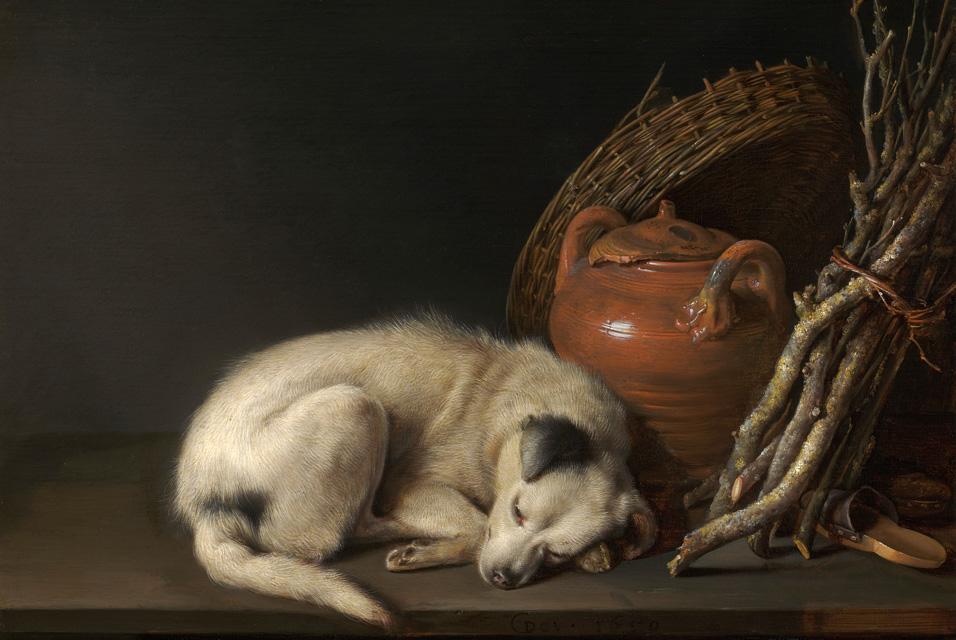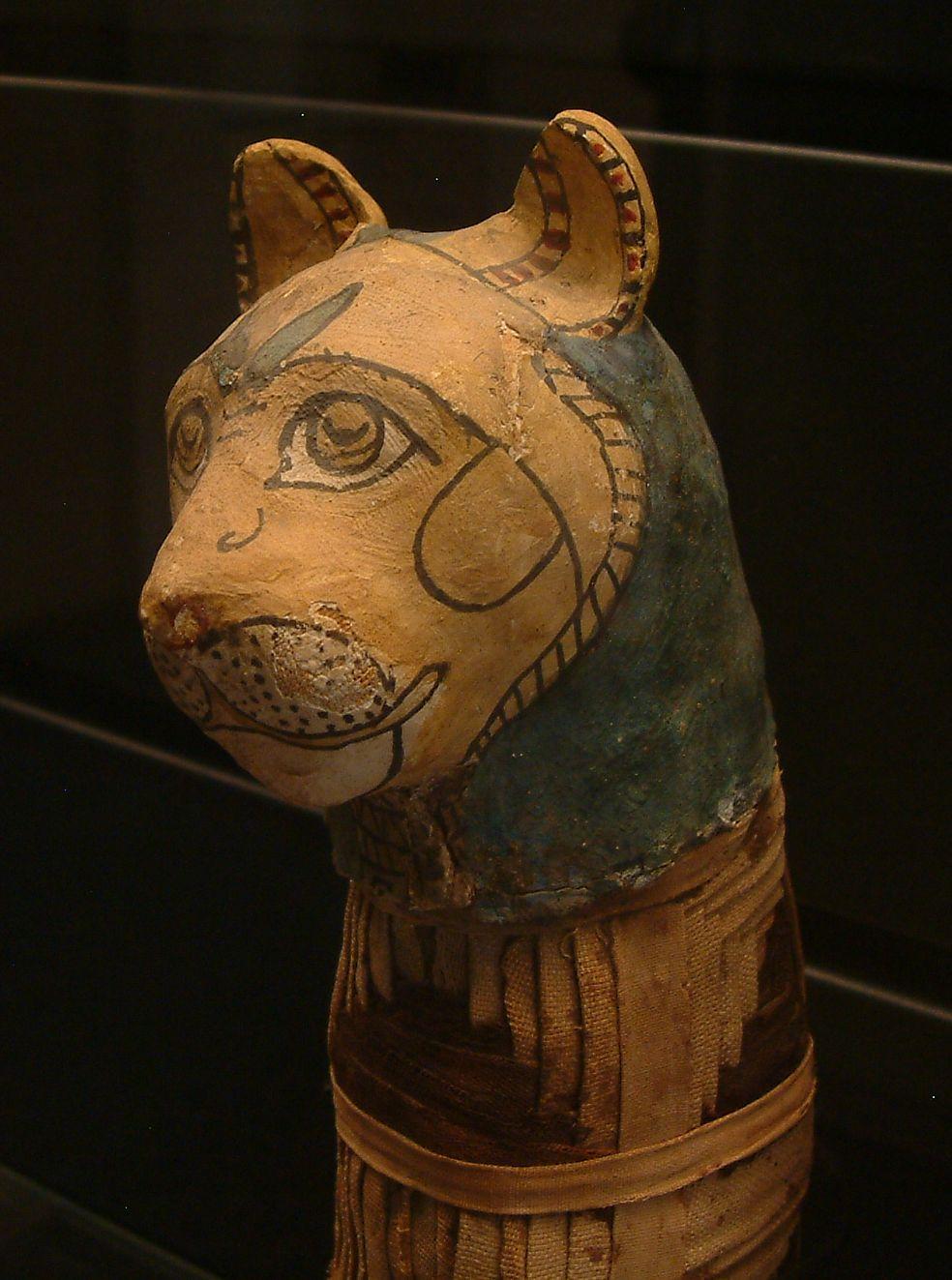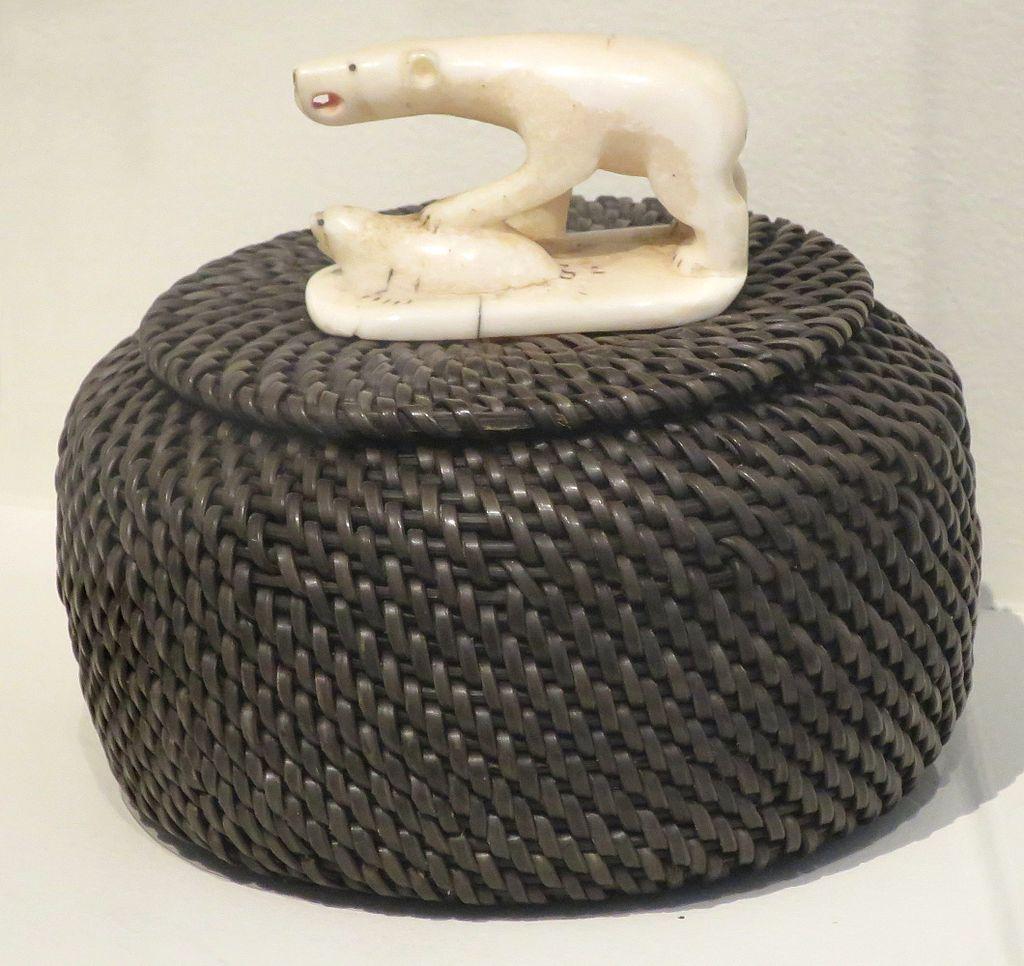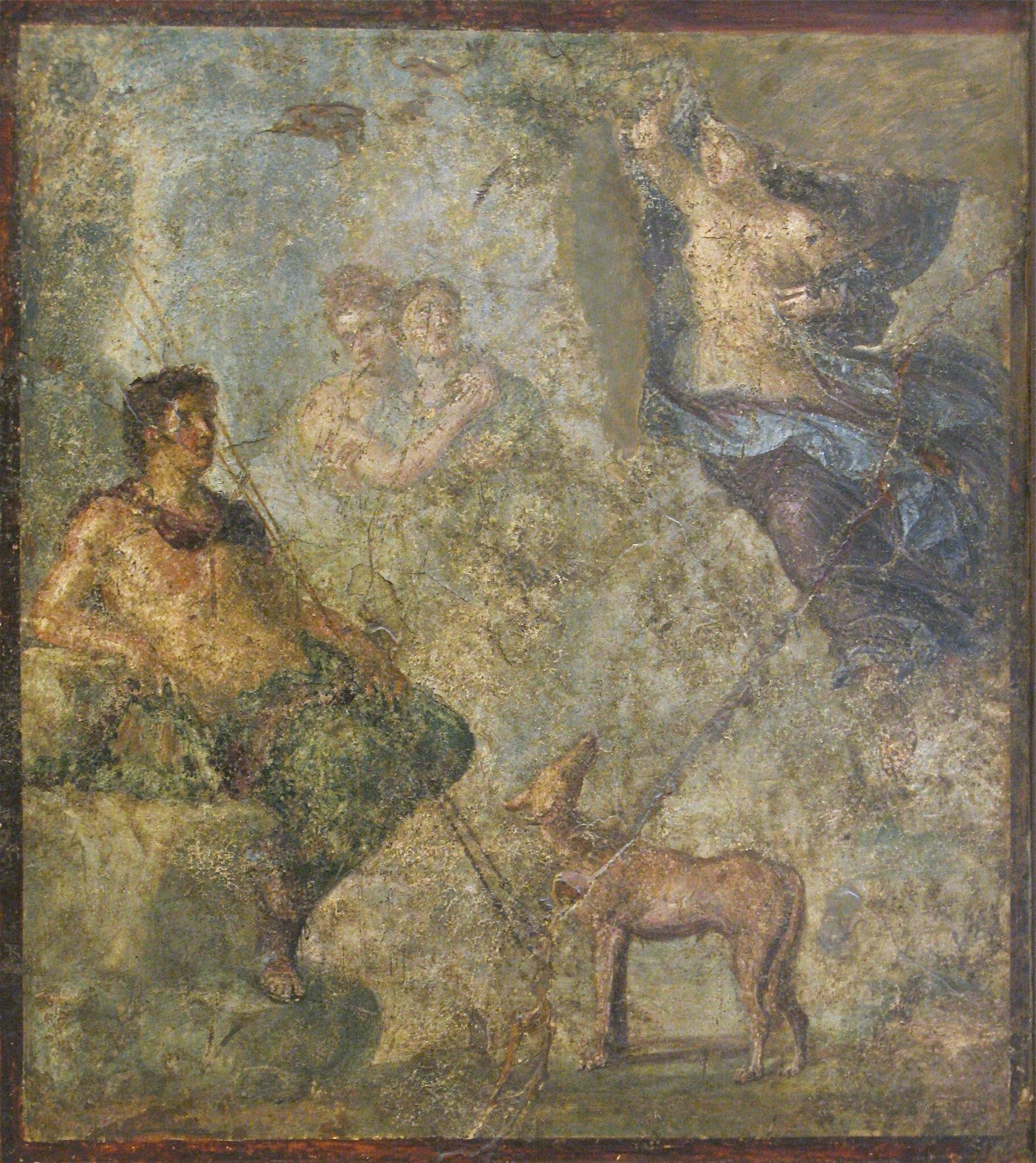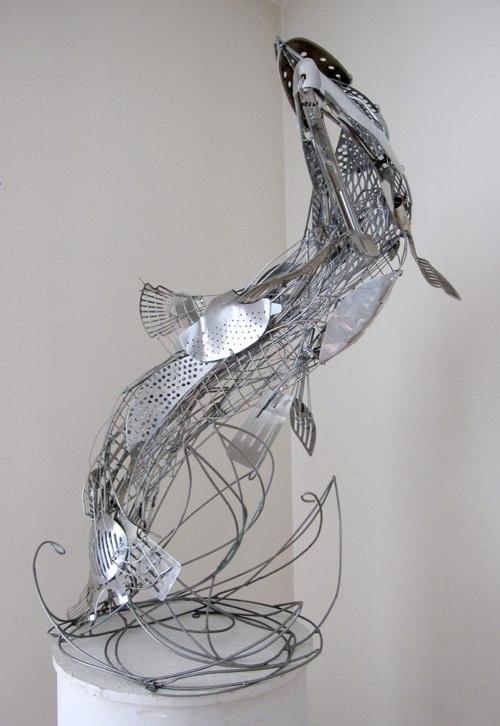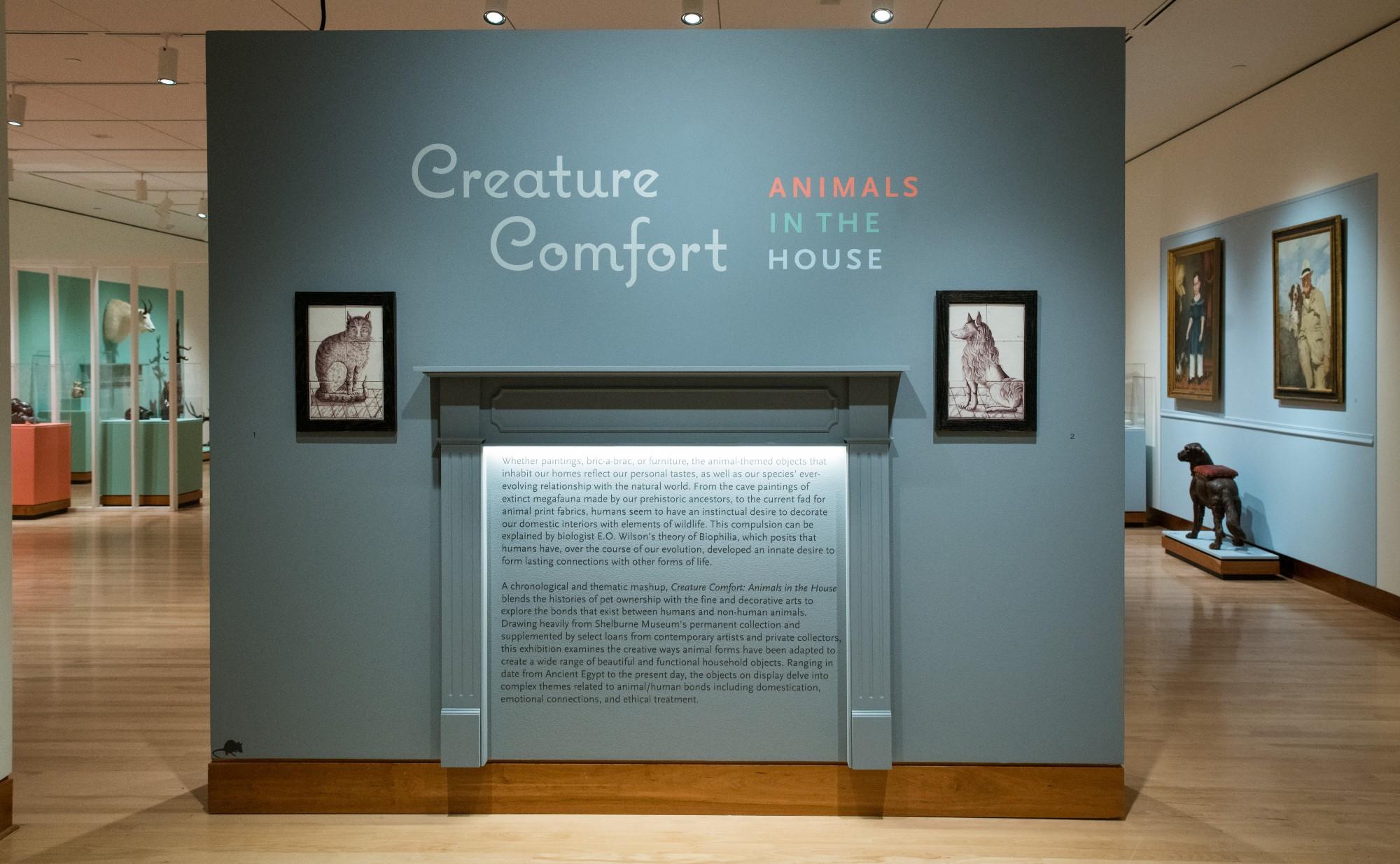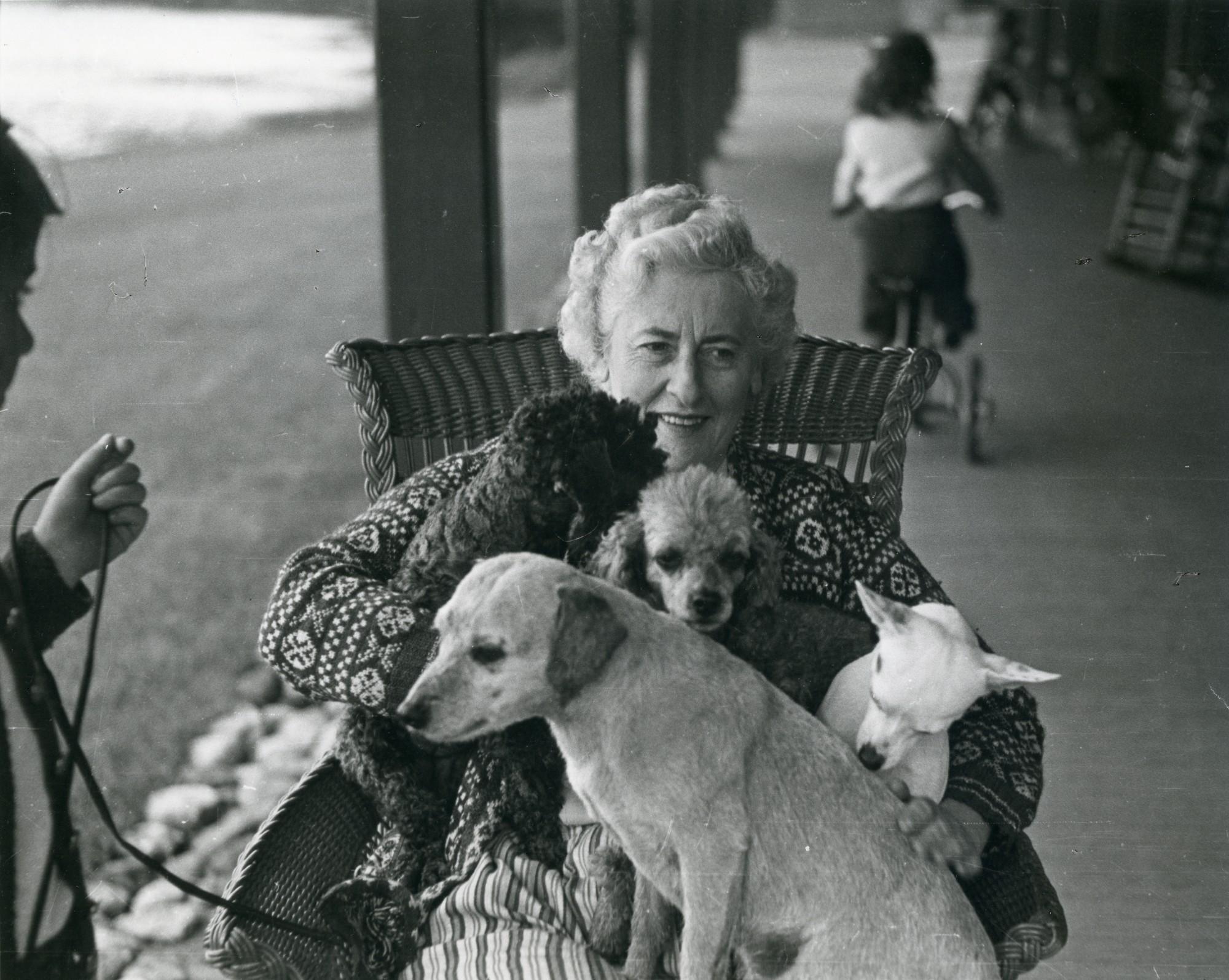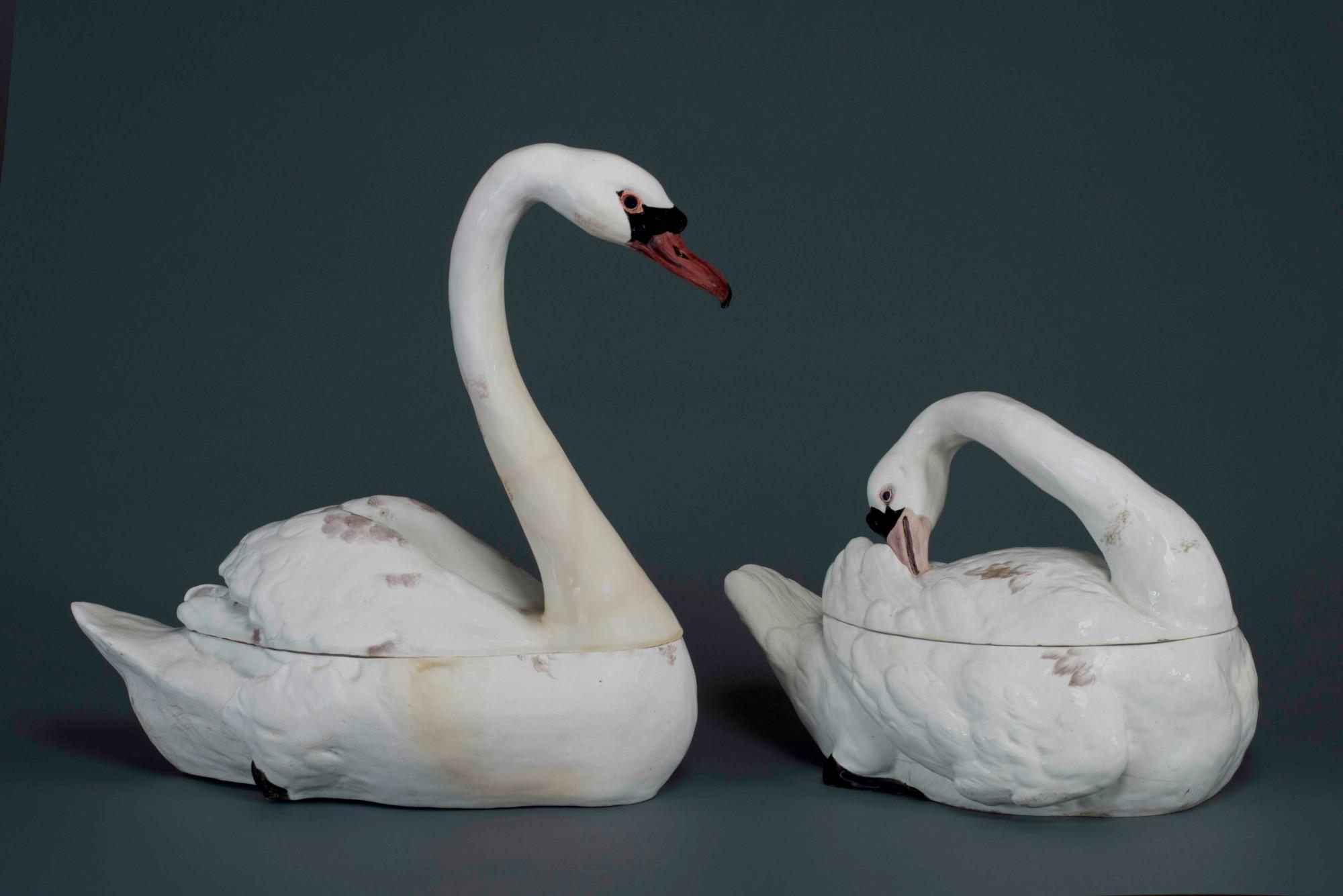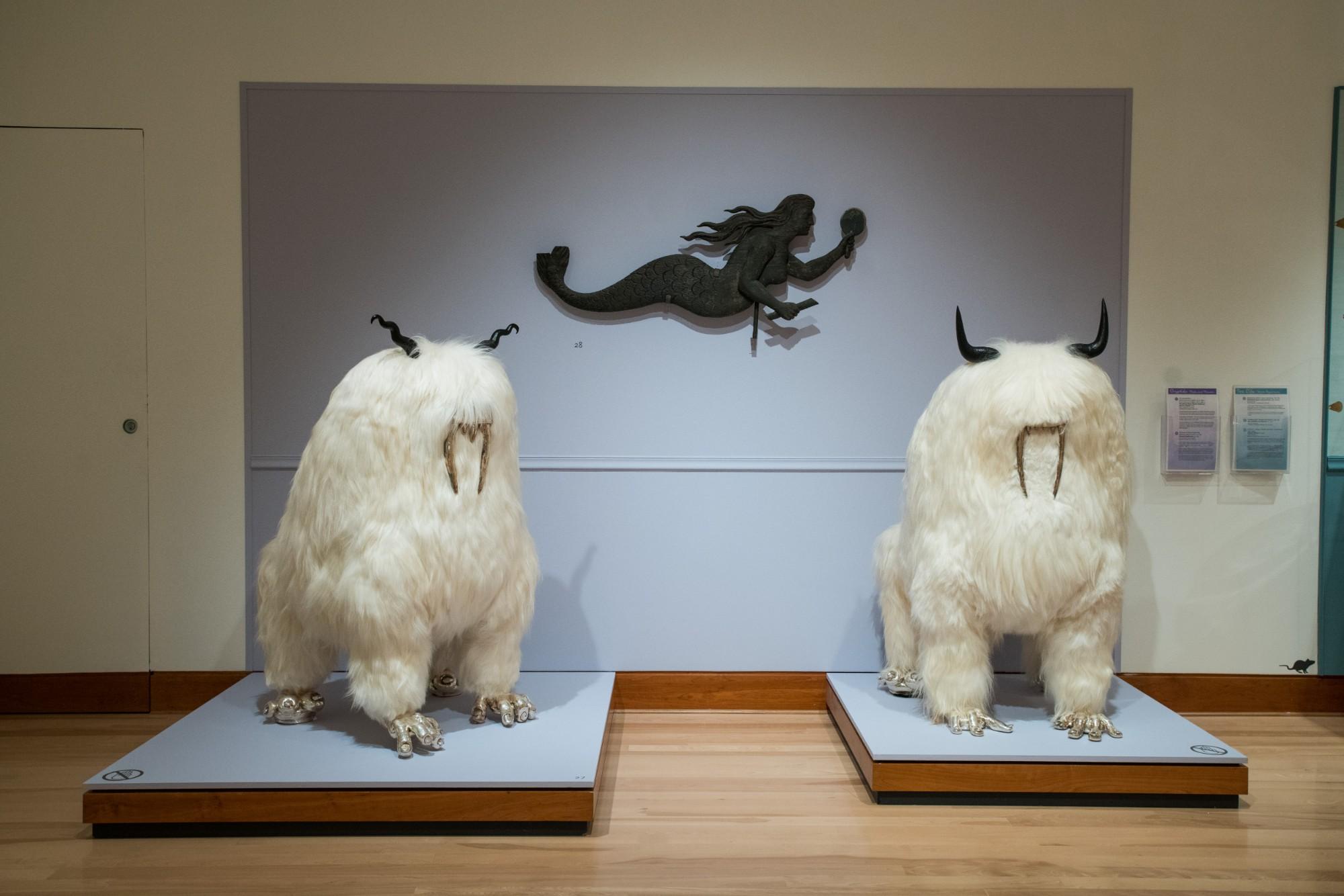Deities in the art of ancient religions were often imagined as mythological creatures sometimes merging animal and human anatomies. Hindu gods and goddesses all have their animal counterparts. The elephant-headed Ganesha, Lord of Obstacles, is perhaps the most widely recognized deity outside of India.
Cats were ubiquitous in ancient Egypt revered as sacred household companions in life and mummified to travel with their human owners after death.
Indigenous cultures acknowledge their dependence on animals for daily survival by incorporating their images in artworks and everyday items like this beautifully crafted Eskimo basket topped with an ivory polar bear and seal handle.




